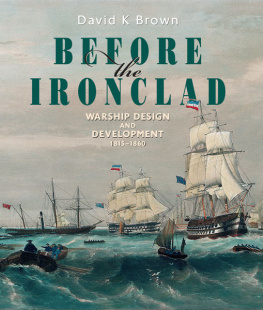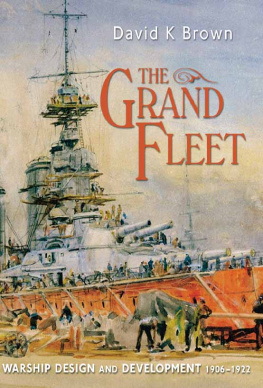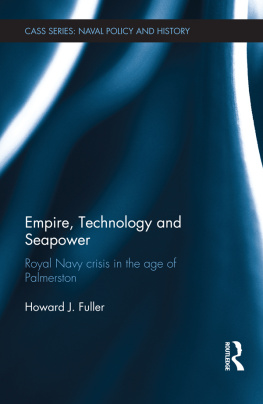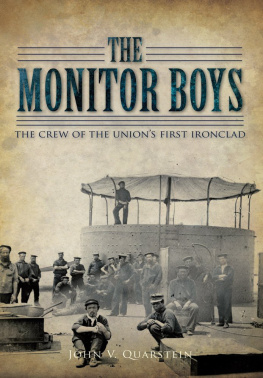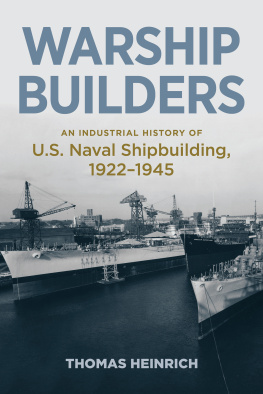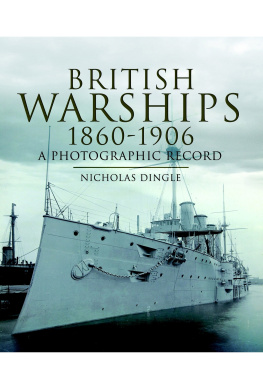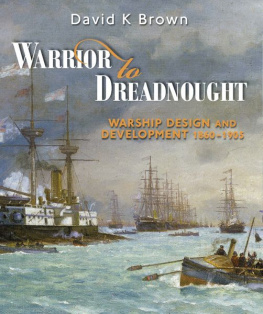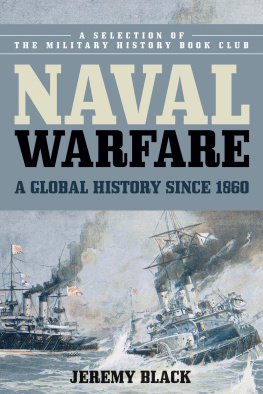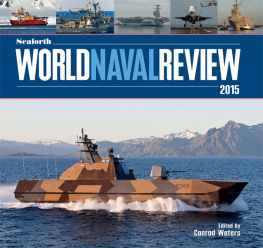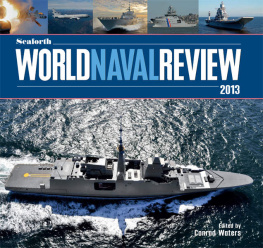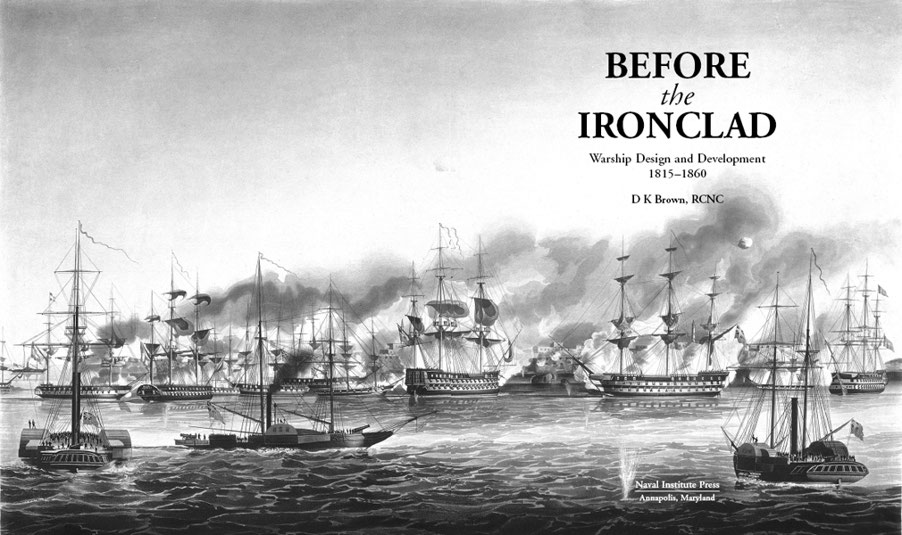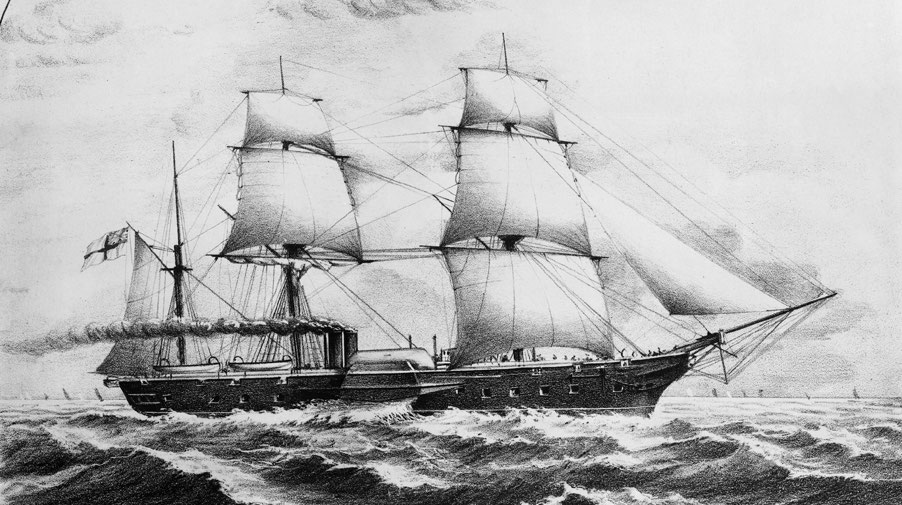Frontispiece:
This depiction of the bombardment of Acre (3 November 1840) shows a typical mixed fleet of the period. The principal ships of the line are the 72-gun Benbow and Edinburgh, both completed at the end of the Napoleonic war. However, the latter here displaying Seppingss round stern was to become one of the prototype steam battleship conversions. In the foreground are the paddle sloops Vesuvius, Phoenix and Stromboli, demonstrating their real value in naval warfare for the first time during this campaign. ( National Maritime Museum neg 7019)
Copyright D K Brown 1990
This edition first published in Great Britain in 2015 by
Seaforth Publishing,
Pen & Sword Books Ltd,
47 Church Street,
Barnsley S70 2AS
www.seaforthpublishing.com
Published and distributed in the United States of America and Canada by the Naval Institute Press, 291 Wood Road, Annapolis, Maryland 21402-5043
www.nip.org
LOC number 89 64155
ISBN 978 1 59114 605 6
PDF ISBN: 978 1 84832 261 5
EPUB ISBN: 978 1 84832 259 2
PRC ISBN: 978 1 84832 260 8
All rights reserved. No part of this publication may be reproduced or transmitted in any form or by any means, electronic or mechanical, including photocopying, recording, or any information storage and retrieval system, without prior permission in writing of both the copyright owner and the above publisher.
The right of D K Brown to be identified as the author of this work has been asserted by him in accordance with the Copyright, Designs and Patents Act 1988.
Typeset and designed by Stephen Dent
Printed and bound in China by Imago
Contents
| One | Victory 17931815 |
| Two | Science, Seppings and the School |
| Three | Resources, Money and Men |
| Four | Swansong |
| Five | Steam |
| Six | Paddle Fighting Ships |
| Seven | Iron Ships |
| Eight | Condemnation of Iron Ships |
| Nine | Screw Propulsion |
| Ten | HMS Rattler and Other Early Screw Ships |
| Eleven | The Screw Fleet: The Build-up to War |
| Twelve | The War with Russia 18541856 |
| Thirteen | The Last Wooden Ships |
| Fourteen | Warrior |
Introduction:
The Navys Industrial Revolution
It will always be said of us with unabated reverence, They built ships of the line. Take it all in all, a ship of the line is the most honourable thing that man, as a gregarious animal, has ever produced.
Ruskin, Harbours of England
IN THE NINETEENTH CENTURY, as now, the big warship was the most complicated and most expensive item in the defence budget. This book tells the story of the successive technical changes which led to the wooden ship of the line, first, vastly growing in size, then gaining in mobility through the power of steam and, finally, quite quickly being replaced by the ironhulled, armoured battleship.
The first great change came when Robert Seppings used scientific method in the design of wooden hulls, an approach which led to a rapid growth in the line-of battle ship. The heavy and inefficient steam engine driving a paddle wheel was first introduced in auxiliaries to tow the sailing warship in calms or contrary winds. These paddle steamers soon grew, acquired an armament and became effective fighting ships themselves, though with some severe limitations.
The screw propeller overcame many of the problems of the paddler and introduced a few new ones and it could be fitted to many existing ships. Only a decade after the screw was proved, the Victory Review at the end of the Crimean War saw a fleet almost entirely consisting of wooden screw steamers.
Virago towing the 110-gun Queen out of Grand Harbour, Malta, on 16 January 1844, demonstrating one of the earliest naval roles for steamers. ( National Maritime Museum PY0891)
Valorous. A second-class paddle frigate, the last major paddle fighting ship built for the Royal Navy. ( National Maritime Museum neg 6845)
Heavy steam engines and the vibration from the early propellers required a strong and rigid hull which had to be made of iron. The first attempts at iron hulls were not successful, for wrought iron was not, and is not, a suitable material for warship construction. With the strong but brittle iron hull protected by armour, the way was open for the iron-hulled, armoured screw battleship Warrior. She was just as much the culmination of the developments of an earlier era as she was the prototype for the next generation and like most transitional designs was very soon obsolete herself.
These major changes in the ships of the Navy took place in little more than a generation and yet all too often the Admiralty of 181560 is portrayed as reactionary, opposed to all change. There was indeed a proper conservatism which was seen as a reluctance to render valueless by unnecessary change the investment already made in the worlds largest fleet. The initiation of change could safely be left to others, since Britains industrial might could quickly and easily retake any temporary lead elsewhere. The quotation below comes from Sir Baldwin Walkers case for the radical introduction of the Warrior at the end of the era, but is implicit in much of what had gone before.
Although I have frequently stated that it is not to the interest of Great Britain possessing as she does so large a navy to adopt any important change in the construction of ships of war which might have the effect of rendering necessary the introduction of a new class of very costly vessels, until such a course is forced upon her by the adoption by foreign powers of formidable ships of a novel character requiring similar ships to cope with them, yet it then becomes a matter not only of expediency, but of absolute necessity
One often reads that the design of a particular early-nineteenth-century warship was copied from another, usually in the context that British ships were copies of foreign prizes. While there is some truth in such statements, they ignore other more important factors. On a more general level, it is true that the French first developed the big two-decker and the Royal Navy followed.
Designers of the period attached undue importance to the lines of the ship; indeed, the lines were William Symondss only claim to be a designer, as he left the structure to his very able deputy, John Edye. In fact, as discussed later, the shape of the ship was so constrained by the need to provide buoyancy at the ends that all forms were far removed from the hydrodynamic ideal, and the small differences between rival designs can have had no effect on performance. In structural design the British were far in the lead, thanks to Seppings. He was the first to understand fully the nature of the loading on a ship at sea and he developed a light and durable structural style to meet these loads. It is wrong to say that Ganges was a copy of the captured French Franklin (HMS Canopus) merely because Seppings used the French lines; the shape of the bow and stern and the structural style were more important, and were all Seppingss.

